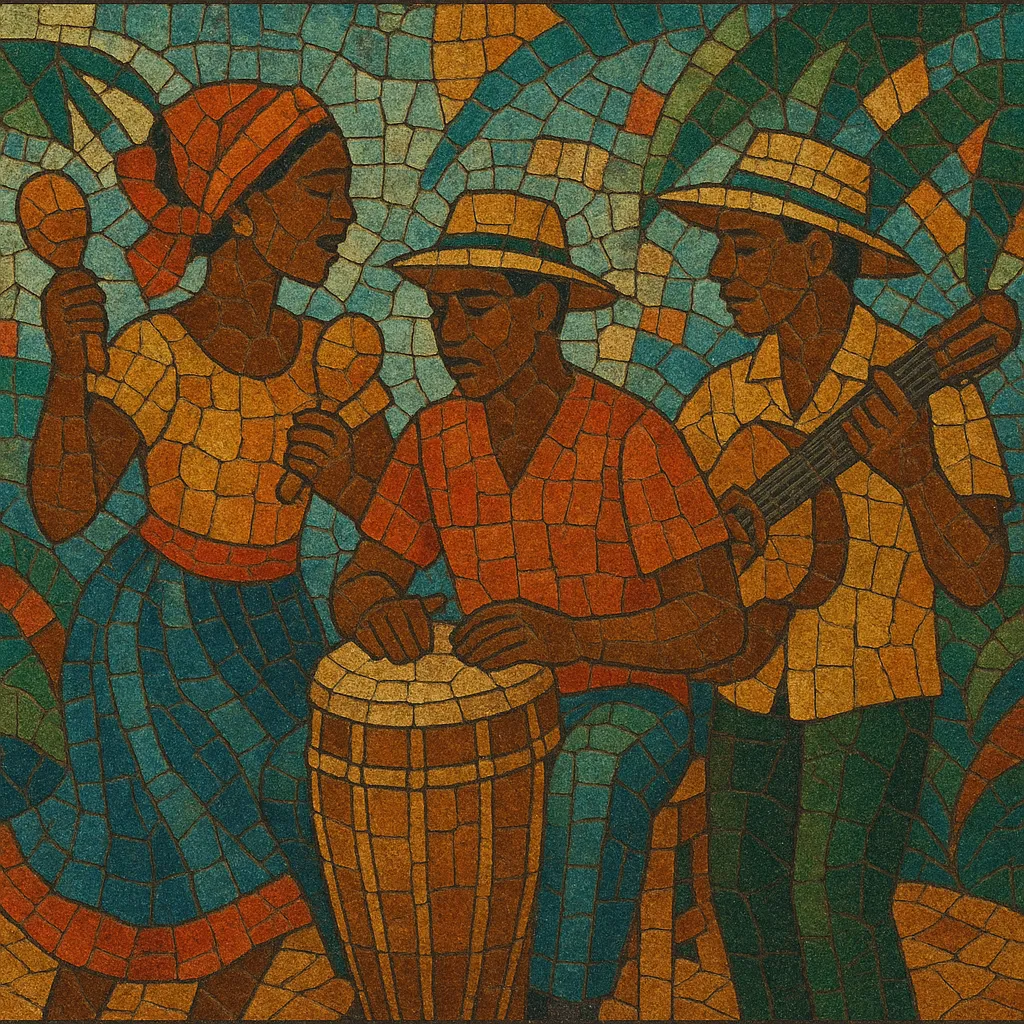
Caribbean folk music is the community-rooted, largely oral-tradition body of songs, dances, rhythms, and performance practices that formed through centuries of Afro‑Indigenous‑European encounter across the islands. It developed in work camps, plantations, fishing villages, ceremonial yards, and village fêtes, where call‑and‑response singing, polyrhythmic drumming, and dance served as both social glue and cultural memory.
The style is marked by hand drums and percussion (ka, barriles de bomba, panderos de plena, tambú, maracas/shak‑shak, ti bwa, bones, and later steelpan), strummed chordophones (guitar, cuatro, tres, banjo), and fife/violin or accordion in some locales. Rhythms often draw on clave, habanera/cinquillo cells, and 6/8–2/4 cross‑rhythms, while harmonies typically favor simple I–IV–V cycles that foreground storytelling in Creole, English, Spanish, and French. Songs accompany dance, carnival processions, rites, and everyday labor, yielding a music that is at once festive, satirical, devotional, and historical.
Enslaved Africans brought to the Caribbean fused West and Central African drumming, dance, and call‑and‑response with Indigenous ceremonial practices and European song forms. Military fife‑and‑drum bands, church hymnody, and social dances (contradance, quadrille) entered local life, while plantation and maritime labor generated work songs with functional rhythms and coded messages.
Across Spanish-, English-, and French‑ruled islands, distinct folk forms coalesced: bomba and plena in Puerto Rico, bèlè and biguine roots in Martinique, gwo ka in Guadeloupe, tambú in Curaçao, mento precursors in Jamaica, and stick‑fighting chant traditions in Trinidad. Instruments localized—barrel drums, panderos, ka drums, maracas, cuatro, tres—while poetic improvisation and satire thrived in village fêtes and carnival.
Recording and radio spread folk idioms and helped crystallize popular styles directly rooted in folk practice: calypso and steelband culture (Trinidad), son and rumba (Cuba), merengue (Dominican Republic), and the plena circuit (Puerto Rico). Folkloric ensembles, cultural festivals, and collectors documented repertoires, while diaspora communities (e.g., New York) sustained and recontextualized traditions.
Tourism, urbanization, and migration encouraged stage adaptations and hybrid bands, yet community troupes, ritual societies, and carnival camps preserved core drumming, dances, and language. Roots movements (e.g., Haitian mizik rasin) re‑centred ceremonial rhythms (rara, vodou drumming) and social commentary, aligning folk heritage with contemporary identity.
Cultural policies, festivals, and scholarly/grassroots archives support transmission to younger performers. Caribbean folk remains a living matrix feeding global genres—from salsa and reggae to zouk and soca—while local workshops, dance schools, and community yards keep the participatory, communal spirit central.

